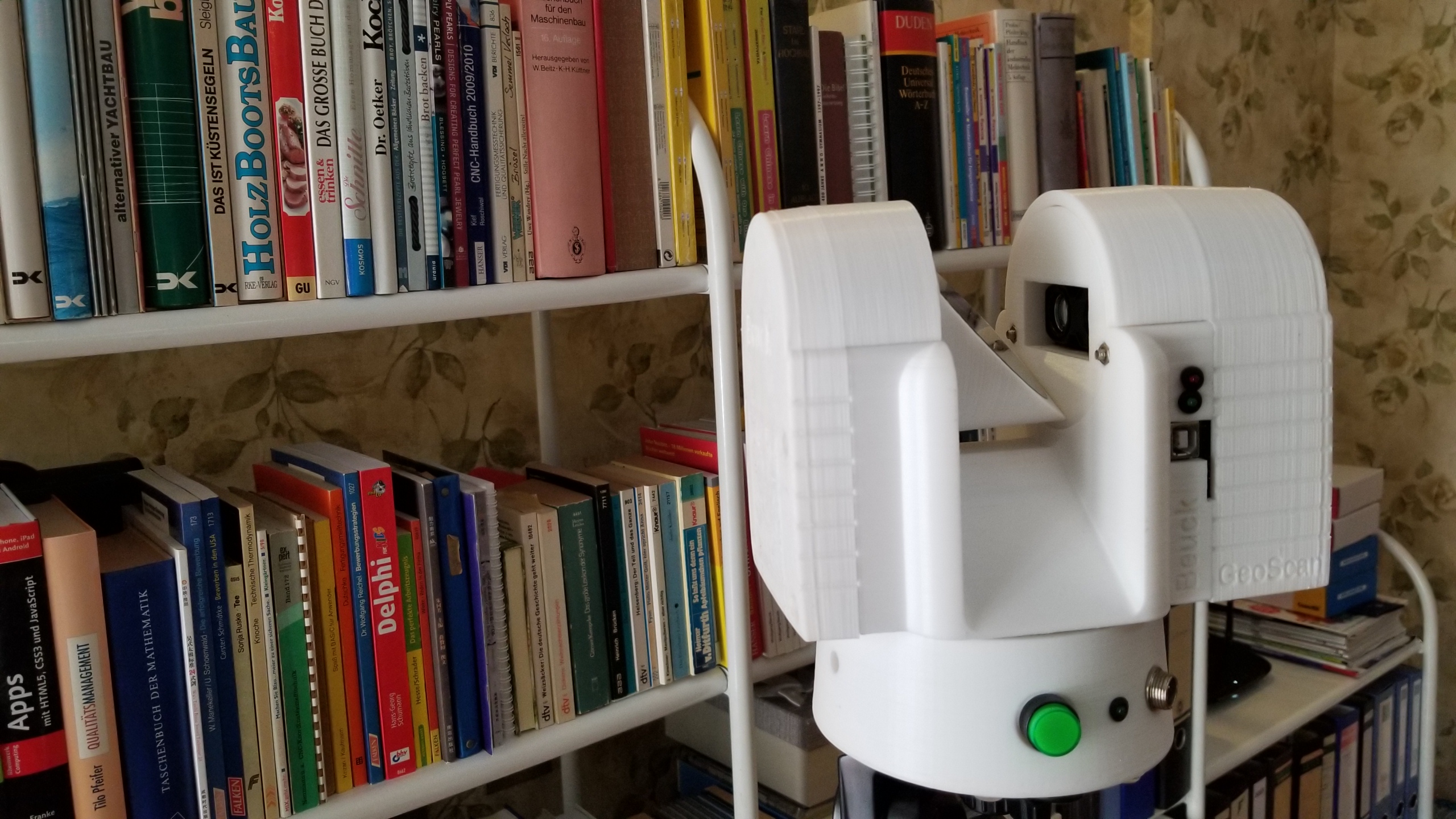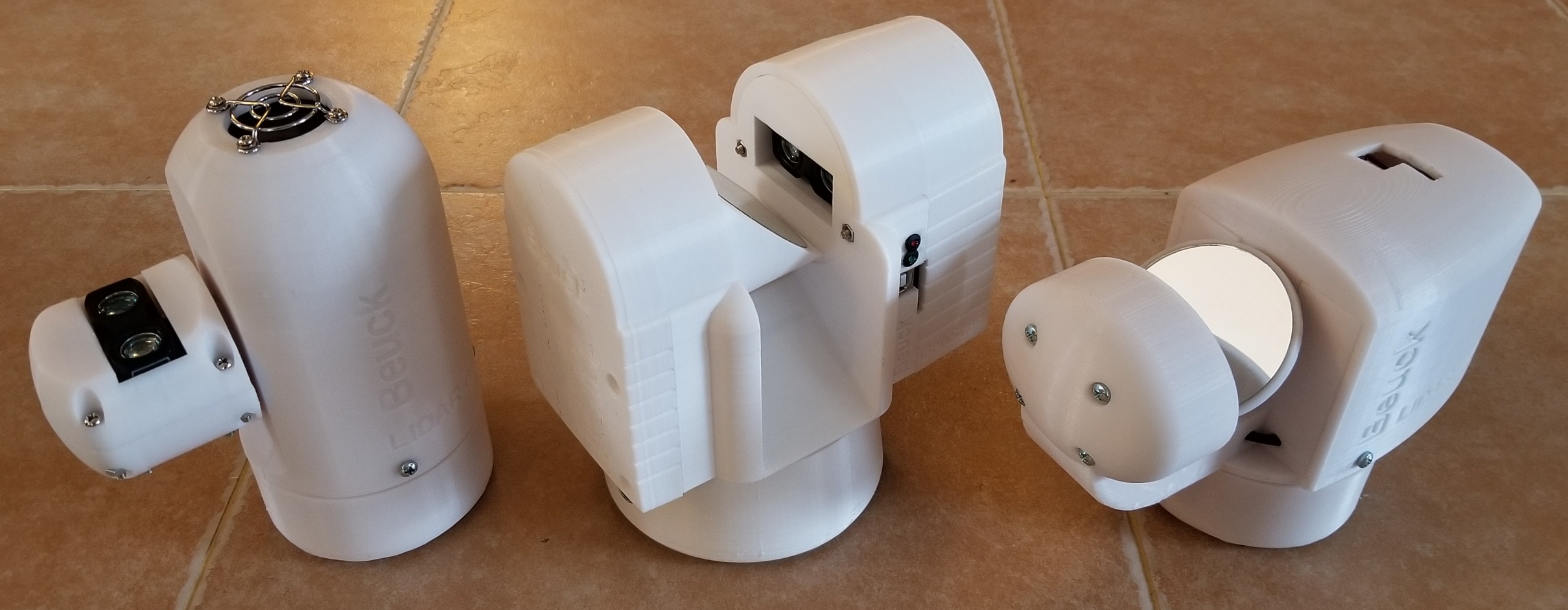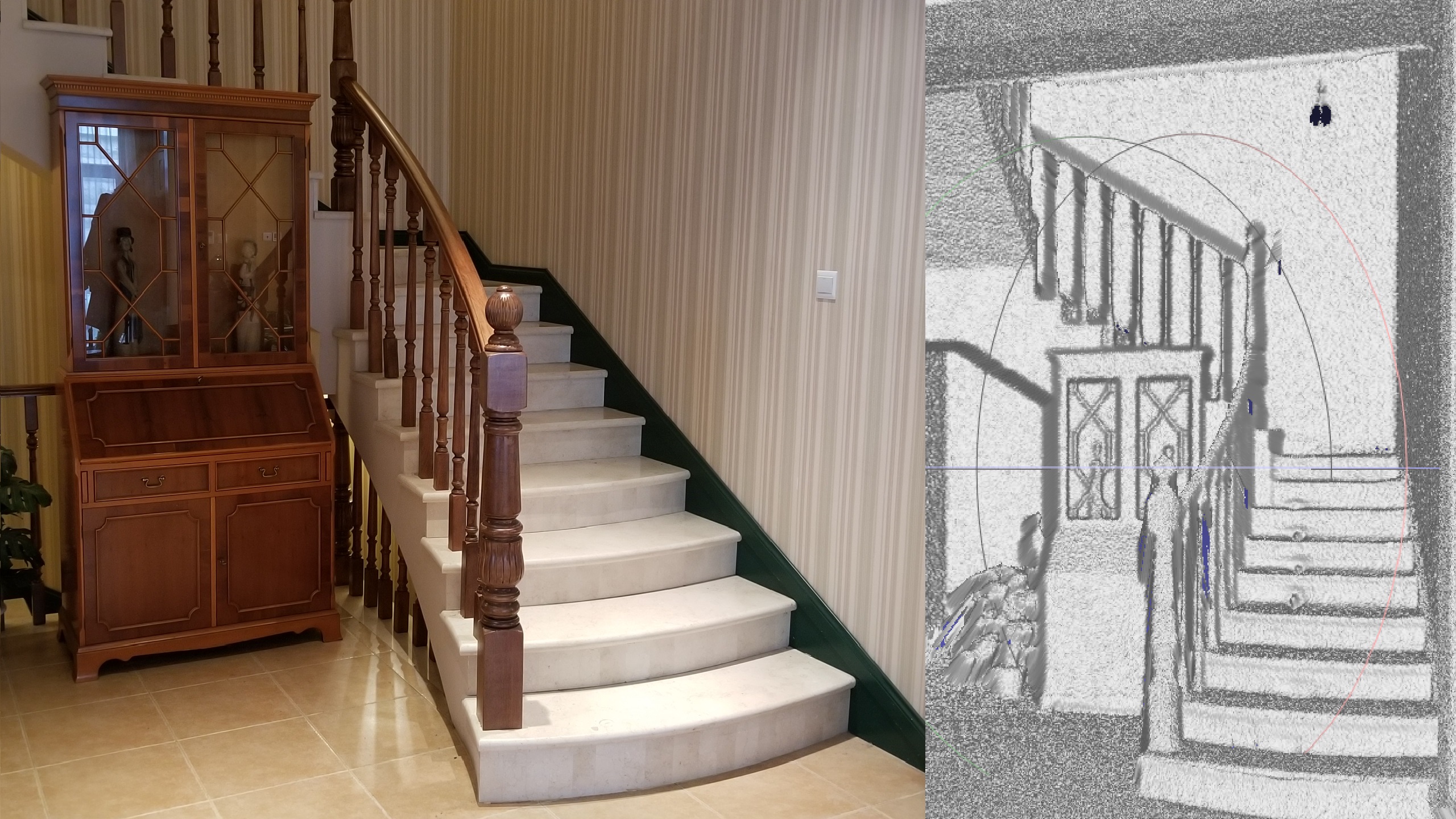Watch the GeoTaker campaign on KickStarter ...
GeoTaker: Capture the Geometry of large Objects
You need a 3D scanner to transfer a real object into a digital file?
- You are a digital artist working with AR and VR applications?
- You are an engineer optimizing a product by re-engineering?
- You are an art historian going to document ancient sculptures?
- You are an interior architect testing, which furniture fits into a room?
Then the new GeoTaker is the best 3D scanner for you. It is precise, its easy to use and it produces OBJ-files, which can be directly imported in nearly any CAD program.
Easy Scanning
The new GeoTaker comes pre-configured and only needs to be powered on. Some basic configurations can be done easily to match your specific scanning situation.
Just mount your GeoTaker on a tripod in front of your object and press the start button. After having finished the scan move the SD-card to your PC, Mac or Linux computer and copy/paste the scan into your scene. The mesh object with triangular faces allows immediate rendering and animation in your CAD program.

The new GeoTaker
Technical Features
The GeoTaker is a long-range 3D scanner with LIDAR technology for precise capture of large objects such as residential rooms, museum space, ancient sculptures or technical objects.
The GeoTaker produces spherical 3D scans of high quality which are even improved by algorithms to achieve a high geometrical repeatability. The noise level of the scans remains at an absolute minimum. This speeds up post-processing significantly, letting you easily finish your job.
The measurement principle of the GeoTaker is easy: The LIDAR sensor sends out a short laser pulse and waits, until the signal is reflected by an object. The time of flight is an indicator for the distance.

GeoTaker: LIDAR sensor measuring the time of flight
Specifications
- Allows full scan (horizontal 360°, vertical 270°) and half / quarter scan with several spherical resolutions
- Can store OBJ-files (vertices + faces + material) or CSV-files (vertices)
- All data will be stored on a SD card (max. 32 GB)
- Captures up to 3,840,000 vertices (7,673,600 faces) in a full scan
- Measurement speed: more than 660 vertices/min.
- Measurement range of the sensor: 5 cm to 40 meters (recommended working distance: 2-38 meters)
- Resolution: 1 cm
- Typical accuracy: +/- 2.5 cm at distances greater than 2 meters (refer to operating manual for complete operating specifications)
- Operating temperature: -20 to 60° C
- Laser wave length/Peak power: 905 nm/1.3 W
- Beam divergence: 8m Radian
- Optical aperture: 12.5 mm
- Regulatory approvals: CLASS 1 LASER PRODUCT CLASSIFIED EN/IEC 60825-1 2014. This product is in conformity with performance standards for laser products under 21 CFR 1040, except with respect to those characteristics authorized by Variance Number FDA-2016-V-2943 effective September 27, 2016. System contains no user serviceable components. Repair or service of the system is only to be handled by factory trained technicians. No service by the user is allowed.
- Power supply: 100-240V, 50/60Hz, 3A
- Weight: < 3 kg, dimensions: < 210*140*210 mm³
Please consider, that the best scanning results will be achieved with non-reflective surfaces. Direct sunlight will influence the scanning results.
Timeline

Timeline of the GeoTaker project
How we made it ...
My name is Wolfgang Beuck. I am a German engineer (living and working in China) and since many years totally fascinated of 3D technology, especially of 3D printing. But, the deeper I was diving into this new additive manufacturing method, I felt the lack of suited 3D models to print. Sure, you can copy models from public community platforms or even CAD design your own 3D models, but nothing catches the atmosphere of your personal environment.
So I decided to design my own 3D scanner. My new scanner should use the same sensors, as automotive industry is requesting for autonomous driving. Luckily the related LIDAR sensors are not only available, but can also be purchased at an affordable price. Two stepper motors rotating and tilting the sensor in horizontal and vertical direction - and the rest of the job will be done by software.
And I named it: "GeoTaker" (= Geometry Taker).
I have designed, 3D printed and tested three different prototypes of the new GeoTaker. The first design focused on the sensor movement (which caused problems with cable connections). The second prototype already used a mirror, but was also too much focused on the drive. Finally the third prototype of the GeoTaker could meet all expectations: The measurement level is centered in both axis and I could compensate the imbalance by improved mass displacement and using a stronger motor. The next activities will focus on the improvement of the user interface. With this, also the final design will be slightly optimized.

Three Prototypes of the GeoTaker: Version 1, Version 3, Version 2
Up to now, I have 3D printed the housings of all GeoTaker prototypes at home. For a large scale series I need to find a company manufacturing the 5 parts of the housing in a serial production technology like injection molding or urethane casting. The first batch assembly and test I can easily do in my own workshop. If the interest in GeoTaker should significantly exceed my expectations, I will build up a suited assembly/test line.
Risks and Challenges
We have tested all prototypes of the GeoTaker for many hours. The final prototype fulfils all quality and user experience standards we have set for our work. We won't ship unless our product can meet or exceed these high standards.
Before shipping the GeoTaker to our backers we have to find a supplier, who will manufacture the housing in serial production (injection molding, urethane casting, ...). In parallel we will build up the required assembly and test capacity in our own company. We will pay special attention to get FDA/FCC/CE/RoHS certifications, which are necessaries for delivering our products to the US, EU and most areas in the world.
Nevertheless, the GeoTaker is a complex product, which may cause unexpected risks that can arise during the pilot production. But we are engineers and well experienced to solve any kind of problems. We feel confident that we will ensure the product quality and hit the delivery dates we are providing.

3D capture by GeoTaker
Environment Protection
Sustainable Design
All mechanical components of the GeoTaker have been designed for long term use. The electronic components are supplied by well-known companies and will remain in production for a long time, or will be replaced by compatible devices. We will provide updates of the operational software on the GeoTaker website (http://www.geotaker.com) in order to allow a long term use of the GeoTaker.
Sustainable Materials
Its planned to produce all housing parts of the GeoTaker from ABS plastic. ABS is known for its toughness and impact resistance, allowing us to generate durable parts that will hold up to extra usage and wear. LEGO building blocks are made from this material for that same reason! ABS also has a higher glass transition temperature, which means the material can withstand much higher temperatures than other plastic materials.
